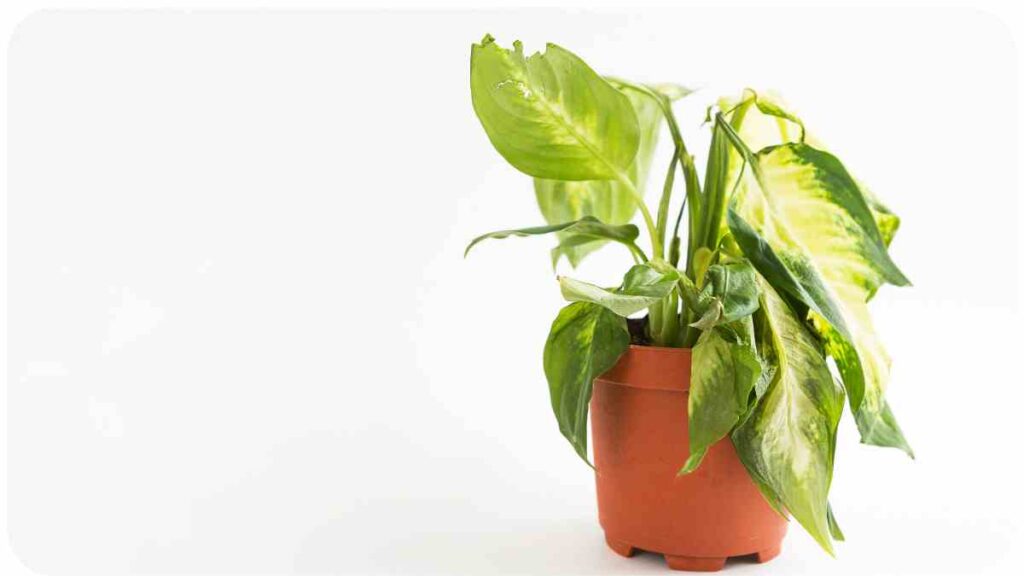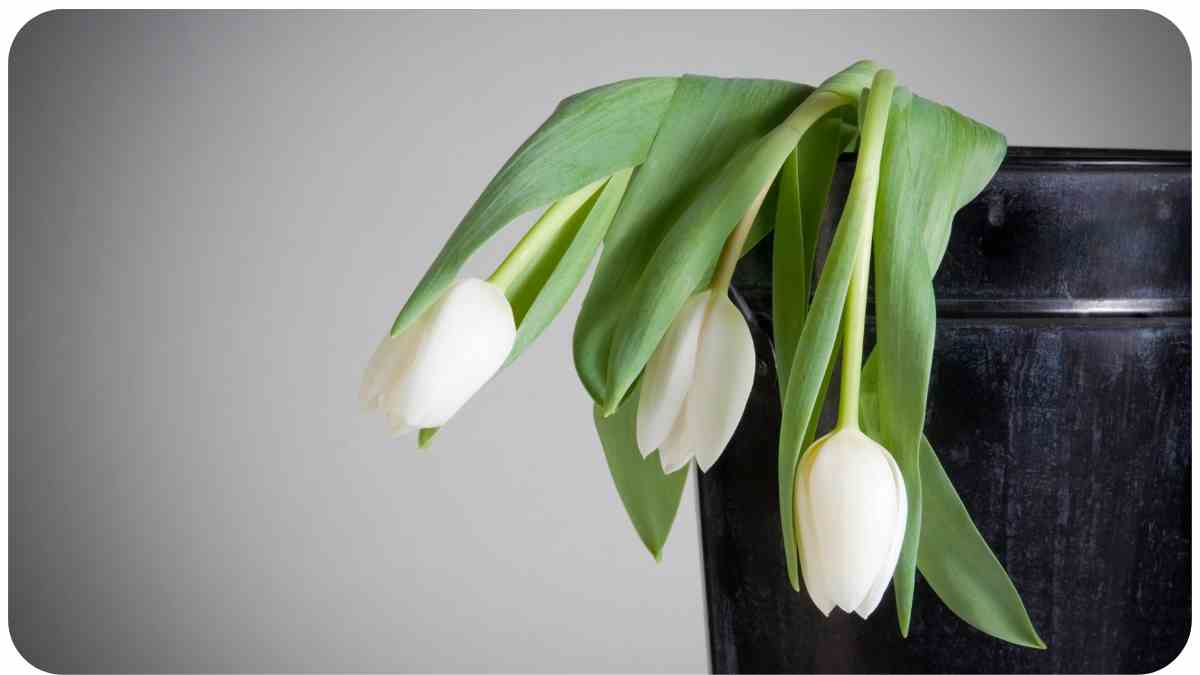Whether you’re a novice gardener or a seasoned plant parent, witnessing your plants wilt can be disheartening. But fear not! With the right knowledge and techniques, you can nurse your wilting plants back to health. In this guide, I’ll cover a wide range of issues and solutions, ensuring you’re equipped to handle any wilting situation.
| Key Takeaways |
|---|
| Understand wilting signs and causes. |
| Balance watering, assess soil health. |
| Address nutrient deficiencies and pests. |
| Provide appropriate sunlight and temps. |
| Follow step-by-step revival guidelines. |
| Prune, repot, or consider alternative methods. |
| Seek professional help when needed. |
| Implement preventive measures. |
| Learn from success stories and lessons. |
Signs of Wilting Plants
Before we jump into troubleshooting, let’s identify the telltale signs of wilting plants. These include drooping leaves, discolored foliage, and a general lack of vibrancy. Each plant species has its unique characteristics, so it’s essential to know what’s normal for your specific plants.
When faced with wilting plants, consider choosing the right artificial turf as an alternative solution for low-maintenance landscaping. This guide offers valuable insights into making an informed decision.
Common Causes of Wilting
Understanding the root causes of wilting is crucial for effective revival. From underwatering to overwatering, nutrient deficiencies to pests, we’ll explore each potential culprit and provide strategies for addressing them.
Assessing Watering Practices
Watering is the cornerstone of plant care. Let’s delve deeper into the different watering methods and their impact on your plants. Check out the table below for a quick comparison:
Table: Comparing Watering Methods
| Watering Method | Pros | Cons |
| Traditional | Easy and familiar | Risk of overwatering/underwatering |
| Self-Watering | Consistent moisture | Limited for certain plant types |
| Bottom Watering | Prevents waterlogging | May not reach deep roots |
Remember, understanding your plant’s water needs is essential, so tailor your watering routine accordingly.
Nutrient Deficiency and Soil Health

Healthy plants rely on a balanced diet, just like we do. Nutrient deficiencies can lead to wilting and stunted growth. Your soil’s health plays a significant role in this. Refer to the table below for essential nutrients your plants require:
If your natural plants are struggling, explore the benefits of disinfecting artificial grass to maintain a vibrant outdoor space. This article provides step-by-step instructions for effective care.
Table: Essential Nutrients for Common Plants
| Nutrient | Role in Plant Health | Common Signs of Deficiency |
| Nitrogen (N) | Leaf growth, vibrant color | Yellowing leaves, slow growth |
| Phosphorus (P) | Root development, flower production | Poor flowering, weak roots |
| Potassium (K) | Overall health, disease resistance | Brown leaf edges, weak stems |
| Calcium (Ca) | Cell structure, nutrient uptake | Blossom end rot (tomatoes) |
| Magnesium (Mg) | Chlorophyll production | Interveinal yellowing |
Pests and Diseases
Pests and diseases can quickly turn your plant’s world upside down. Stay vigilant and refer to the tables below for common pests and diseases, along with their effects and symptoms:
Table: Common Pests and Their Effects
| Pest | Effects on Plants |
| Aphids | Deformations, sticky residue |
| Spider Mites | Webbing, discoloration |
| Whiteflies | Yellowing leaves, wilting |
| Mealybugs | Cotton-like clusters |
Table: Plant Diseases and Symptoms
| Disease | Symptoms |
| Powdery Mildew | White powdery spots |
| Root Rot | Wilting, brown roots |
| Leaf Spot | Circular lesions on leaves |
| Botrytis | Fuzzy gray mold |
Sunlight and Temperature Balance
Plants are like Goldilocks; they need the right amount of sunlight and temperature to thrive. Improper light and temperature conditions can lead to wilting. Learn your plant’s preferences and provide the ideal environment.
To revive wilting plants, start by addressing your lawn’s health. Learn about fixing uneven grass to ensure a lush and thriving environment for your greenery.
Reviving Wilting Plants: Step-by-Step
It’s time to revive your wilting plants! Follow these actionable steps from the table below to give your plants a fighting chance:
Table: Actionable Steps to Revive Plants
| Step | Description |
| 1. Check Watering | Assess if your plant is overwatered or underwatered. |
| 2. Adjust Watering | Water according to your plant’s needs and type. |
| 3. Check Soil | Examine soil moisture and quality. |
| 4. Trim and Prune | Remove dead or yellowing leaves and spent flowers. |
| 5. Replenish Nutrients | Use balanced fertilizer or compost to boost plant health. |
Pruning and Trimming
Pruning is like giving your plants a haircut. It promotes new growth, eliminates diseased parts, and improves airflow. Different plants require different pruning techniques, so refer to the table below for pruning guidelines:
Table: Pruning Guidelines for Different Plants
| Plant Type | Pruning Approach |
| Flowering Shrubs | Prune after flowering to encourage new buds. |
| Fruit Trees | Shape in dormant season; remove dead wood. |
| Herbs | Regularly trim for bushier growth. |
| Succulents | Remove leggy growth and dead leaves. |
Repotting and Transplanting
Sometimes, your plants outgrow their homes or need fresh soil. Repotting can invigorate a wilting plant. Check the table below for best practices:
Witnessing yellow leaves? Don’t fret! Discover a comprehensive solution to address this common plant issue and revive the health of your garden plants.
Table: Best Practices for Repotting
| Situation | Approach |
| Root-Bound Plant | Repot in a slightly larger container. |
| Soil Depletion | Refresh soil and move to a larger pot. |
| Transplanting Outdoors | Choose the right time and prepare soil. |
Hydroponics and Aeroponics Options

If traditional soil isn’t your thing, consider hydroponics or aeroponics. These soilless growing methods provide plants with nutrients and water directly. Let’s weigh their pros and cons:
Table: Pros and Cons of Hydroponics/Aeroponics
| Method | Pros | Cons |
| Hydroponics | Faster growth, controlled environment | Initial setup cost, technicalities |
| Aeroponics | Efficient water use, rapid growth | Complex setup, maintenance |
Seeking Professional Help
Sometimes, despite your best efforts, plants need professional care. Compare different plant care specialists using the table below:
Table: Plant Care Specialists Comparison
| Specialist | Expertise | Pros |
| Botanist | Plant biology, research | In-depth knowledge, scientific approach |
| Horticulturist | Plant cultivation, landscaping | Practical solutions, garden design expertise |
| Arborist | Tree care, disease management | Tree-specific care, preservation expertise |
Preventive Measures for Future
After successfully reviving your plants, it’s crucial to prevent future wilting. Consult the seasonal plant care calendar in the table below:
Wilting plants could indicate irrigation problems. Learn to troubleshoot common irrigation system issues to ensure your plants receive the right amount of water for optimal growth.
Table: Seasonal Plant Care Calendar
| Season | Tasks |
| Spring | Pruning, fertilizing, repotting |
| Summer | Regular watering, pest control |
| Fall | Cleaning up, preparing for winter |
| Winter | Indoor care, minimal watering |
Success Stories and Lessons Learned
In my journey as a plant enthusiast, I’ve faced many challenges. One memorable instance involved nursing an orchid back to health by adjusting its light and repotting it. This experience taught me the importance of adapting care routines to each plant’s unique needs.
Conclusion
Your wilting plants have a fighting chance! By addressing their specific needs and following the actionable steps in this guide, you can successfully revive them. Remember, the key lies in understanding your plants, being attentive to their signals, and taking proactive measures. Happy gardening!
This comprehensive guide has covered a plethora of topics, from identifying wilting signs to employing specific revival techniques. With each table providing valuable insights, you now possess the tools to confidently tackle any wilting situation. So roll up your sleeves, put on your gardening.
Further Reading
For more insights and tips on reviving your wilting plants, check out these valuable resources:
Reviving a Dead Plant: 8 Tips: This article offers practical advice on bringing seemingly lifeless plants back to vitality, with step-by-step instructions.
How to Revive a Plant: Real Simple provides expert guidance on assessing the health of your plants and implementing effective revival techniques.
Tips to Revive a Dying Plant: Feel Grounded shares actionable strategies for nurturing and rejuvenating plants on the brink, along with insightful explanations.
FAQs
How do I know if my plant is wilting?
Wilting plants often have drooping leaves and lackluster appearance. The leaves may feel limp to the touch, and the overall vibrancy of the plant diminishes.
What is the most common cause of wilting?
Underwatering is a common cause of wilting. Plants need adequate moisture to thrive, and insufficient water can lead to dehydration and wilting.
How can I revive an overwatered plant?
To revive an overwatered plant, ensure proper drainage and let the soil dry out before watering again. Trim away any damaged or yellowing leaves.
Can wilting be caused by too much sunlight?
Yes, excessive sunlight and high temperatures can cause wilting. Some plants are sensitive to intense sunlight, so it’s essential to provide adequate shade and regulate their exposure.
Is repotting necessary for all wilting plants?
Not necessarily. Repotting is beneficial when a plant has outgrown its container or its soil is depleted. Assess the specific needs of your plant before deciding to repot.
How often should I fertilize wilting plants?
Fertilizing frequency depends on the type of plant and the season. In general, fertilize during the growing season (spring and summer) and reduce or halt fertilization during the dormant period (fall and winter).
Can wilting plants recover fully?
Yes, many wilting plants can fully recover with the right care and attention. Identifying the underlying cause and addressing it promptly significantly improves the chances of revival.
Should I remove all wilted leaves?
It’s a good practice to remove severely wilted or dead leaves. These leaves consume energy and can attract pests or diseases. Pruning them helps the plant direct resources towards healthy growth.
How do I prevent wilting in the future?
Maintain a consistent watering schedule, provide appropriate lighting and temperature conditions, regularly inspect your plants for pests or diseases, and follow proper pruning and fertilization practices.
Can wilting be a sign of transplant shock?
Yes, wilting is often a symptom of transplant shock, which occurs when a plant is moved to a new location or repotted. The plant’s root system may take time to adjust to the change, leading to temporary wilting.

Hi! My name is Hellen James, and I’m here to help you with your home-maintenance needs. Whether it’s building a better yard or just trying to fix a garden—I can show you how.


